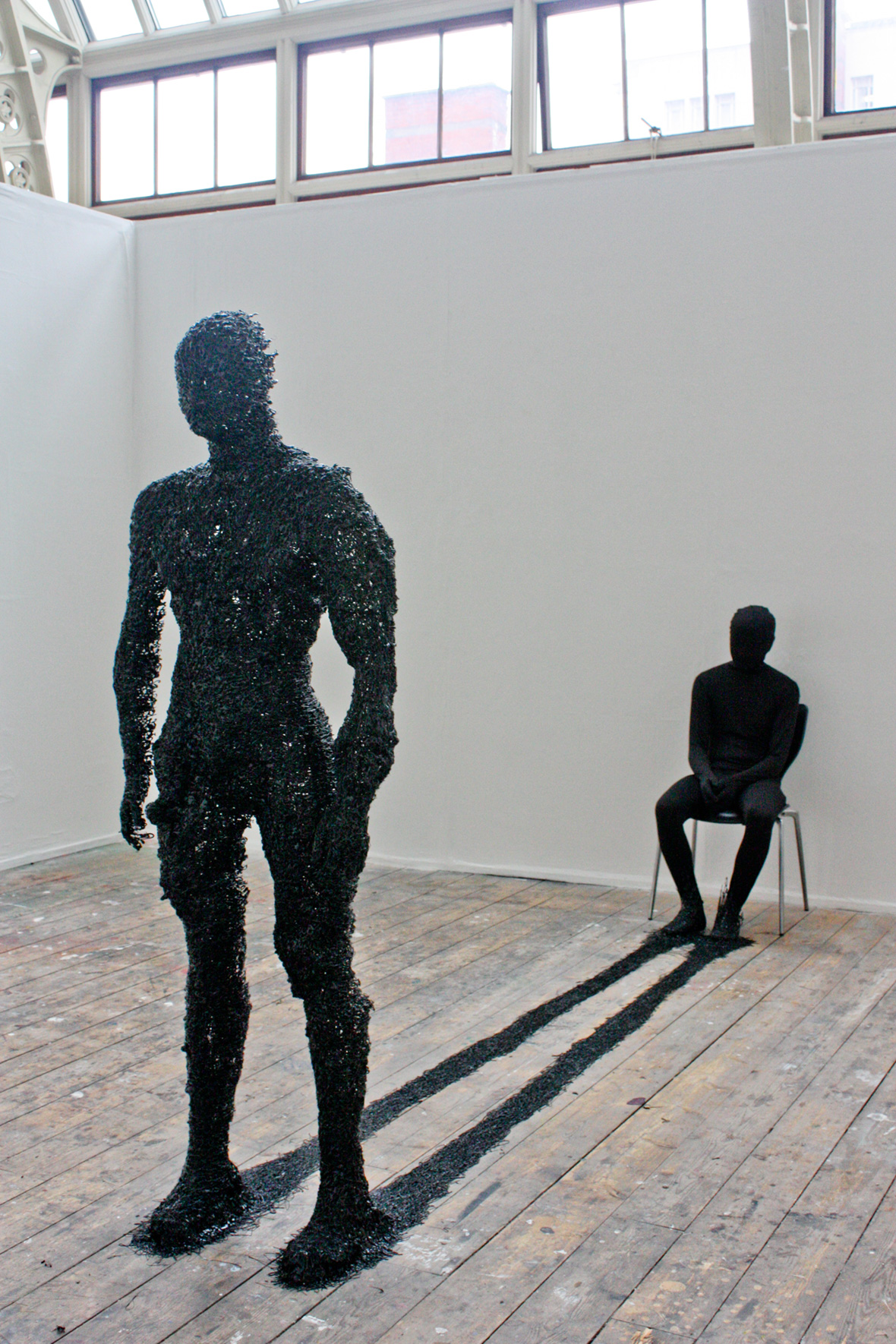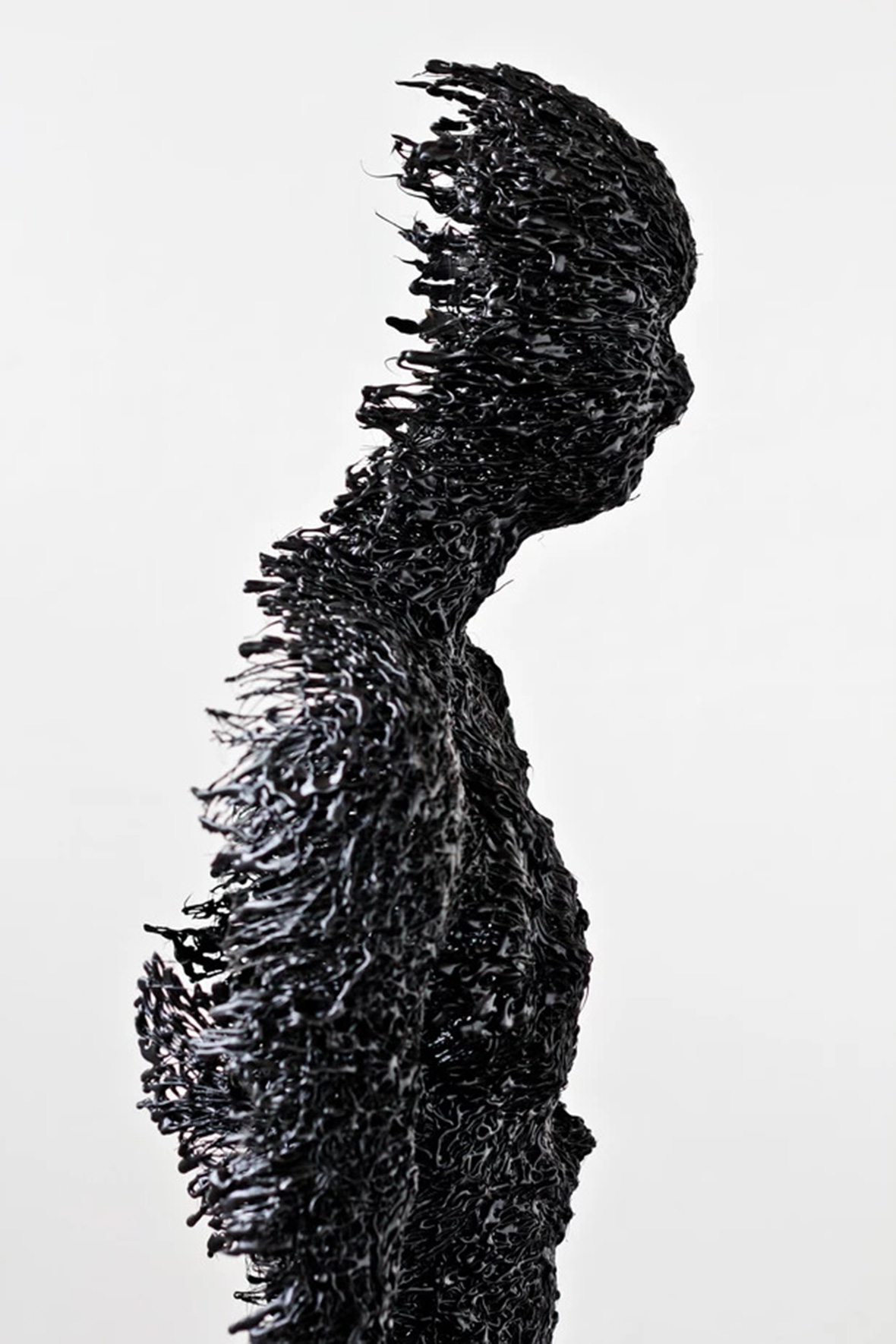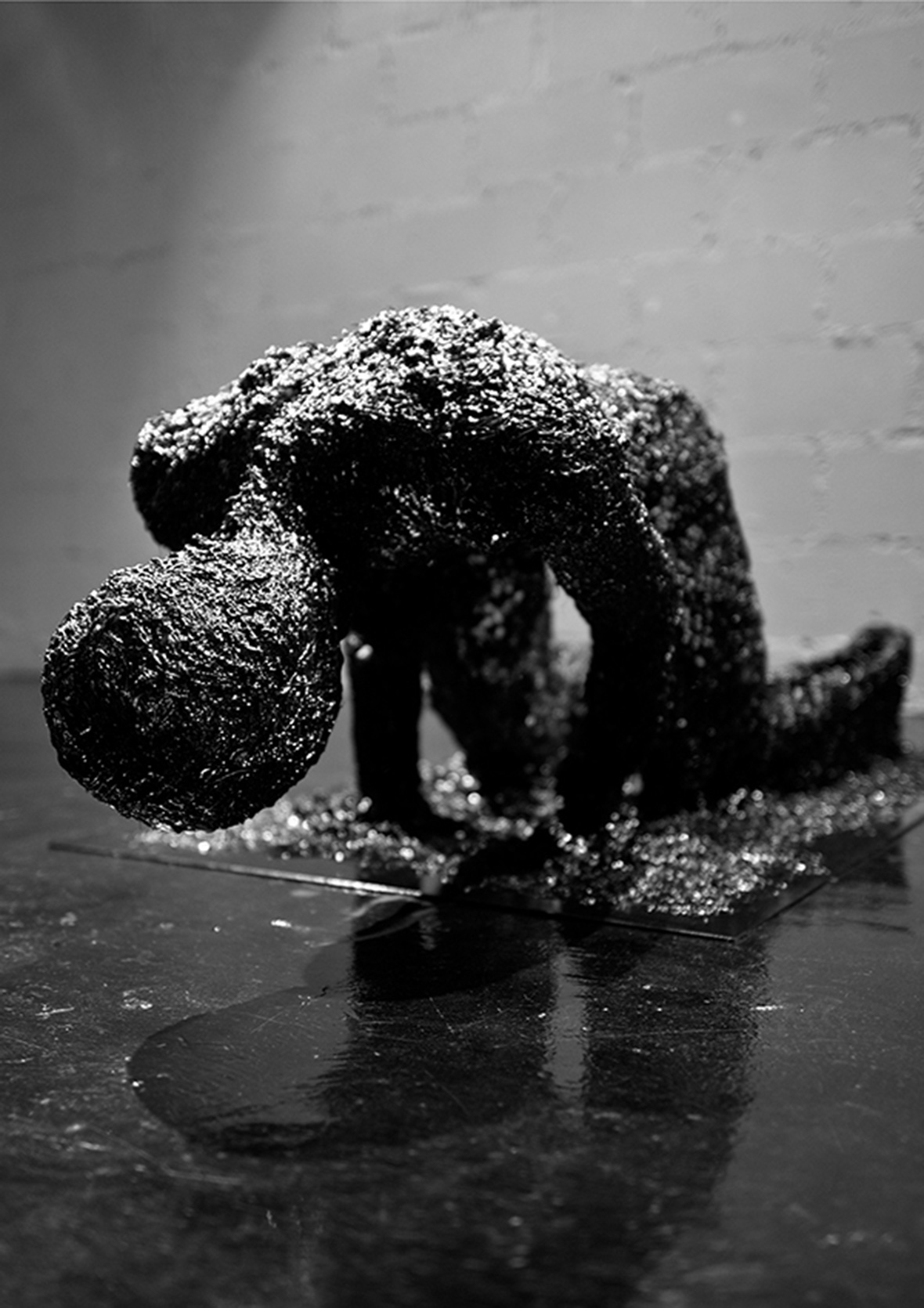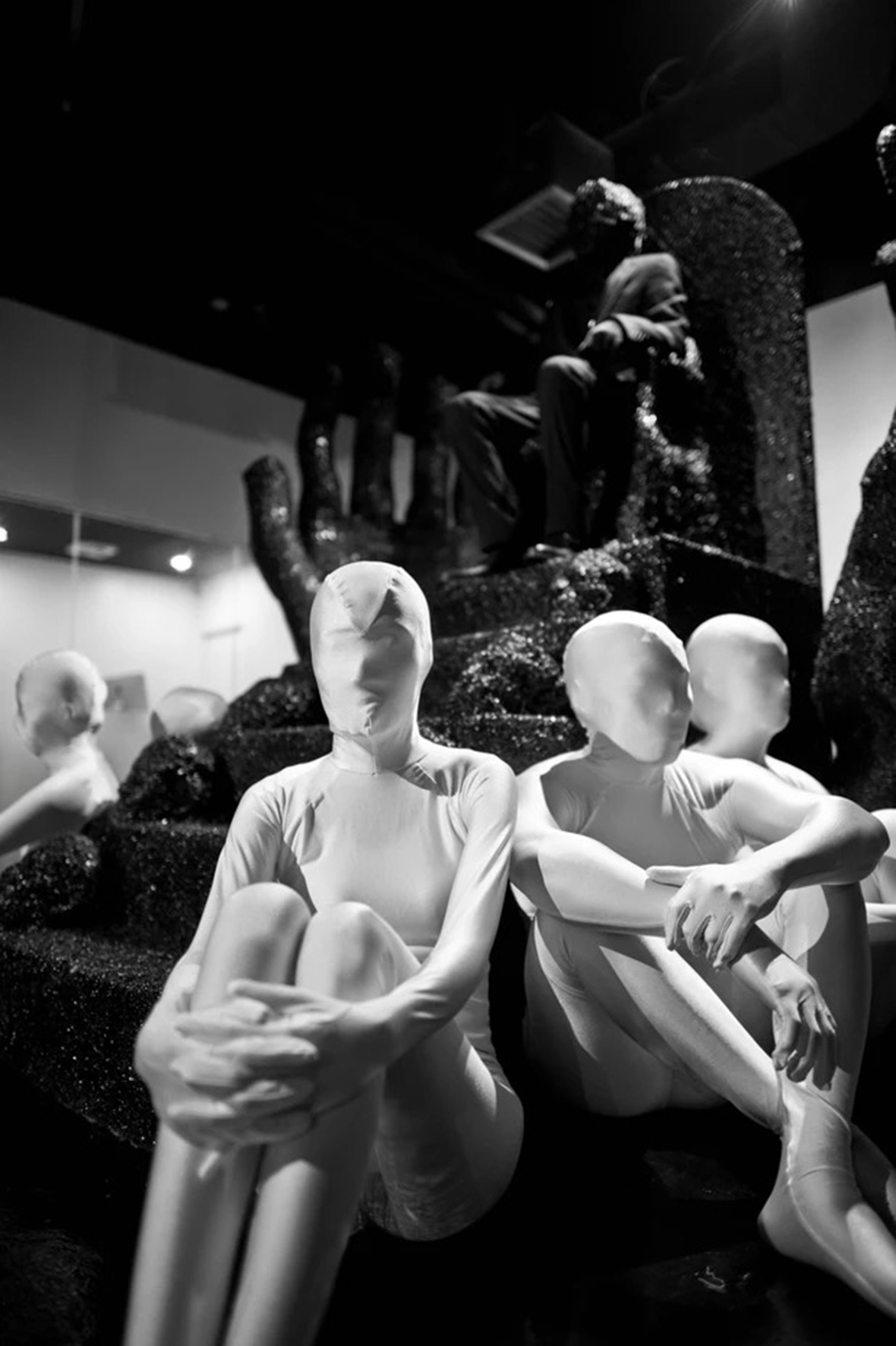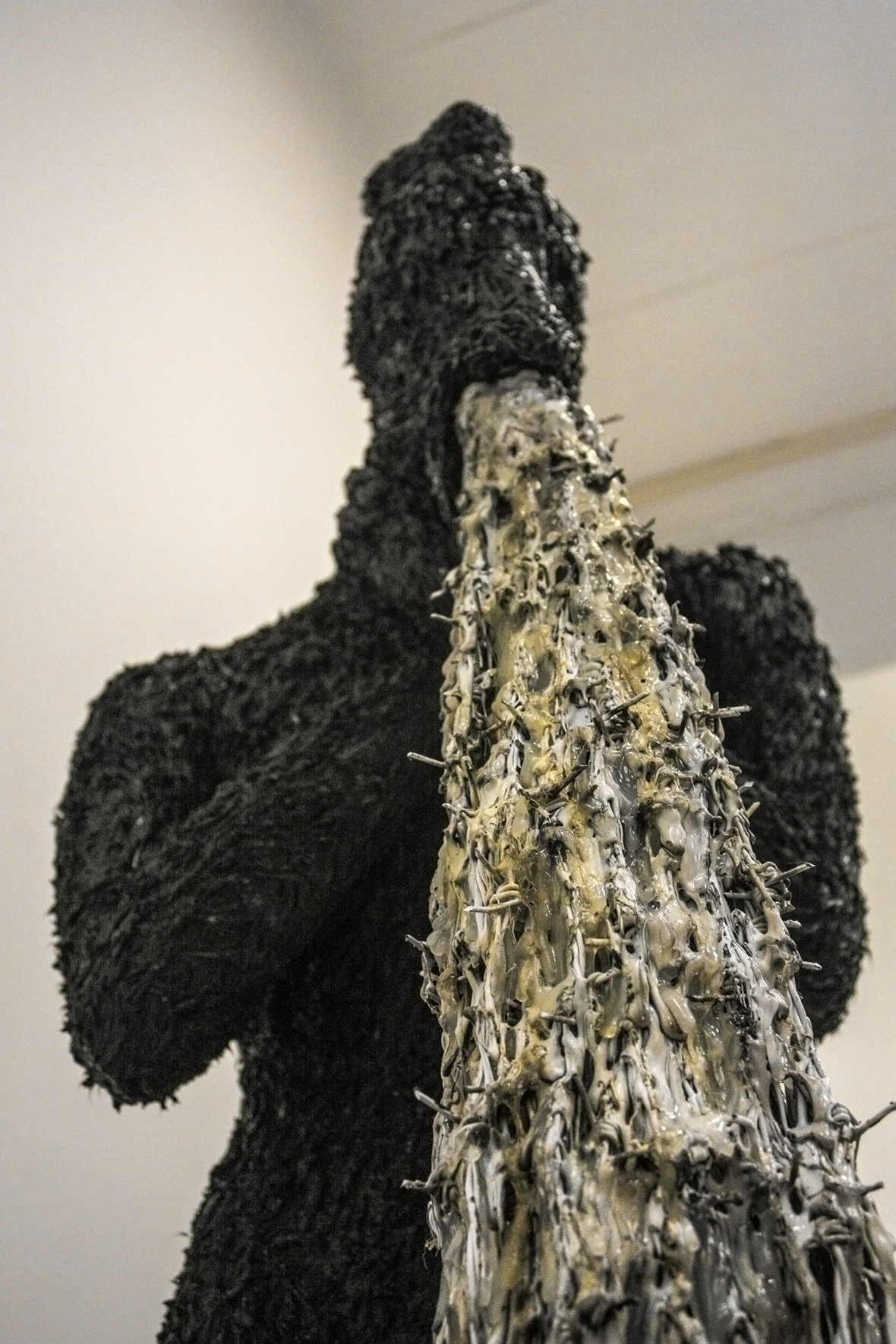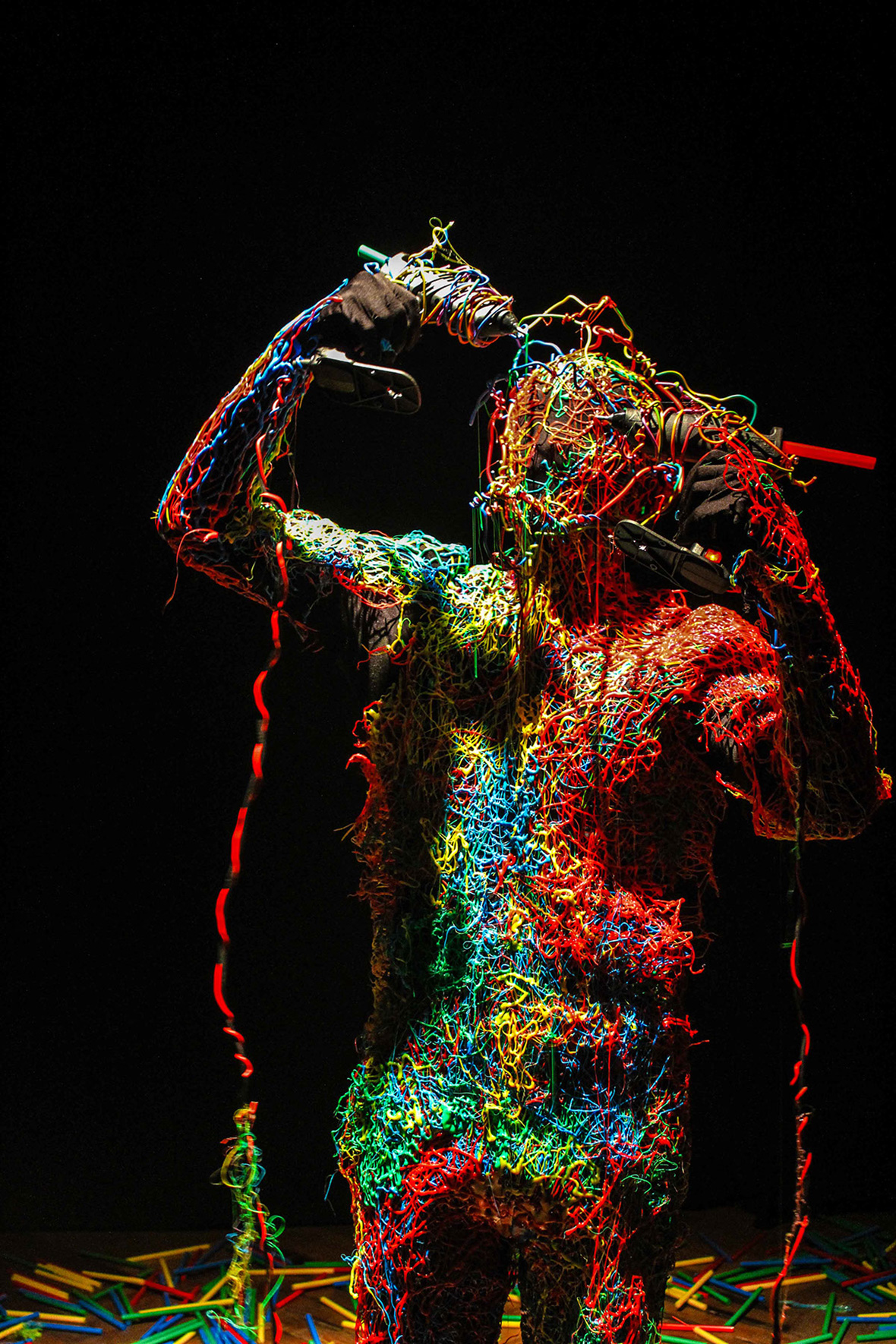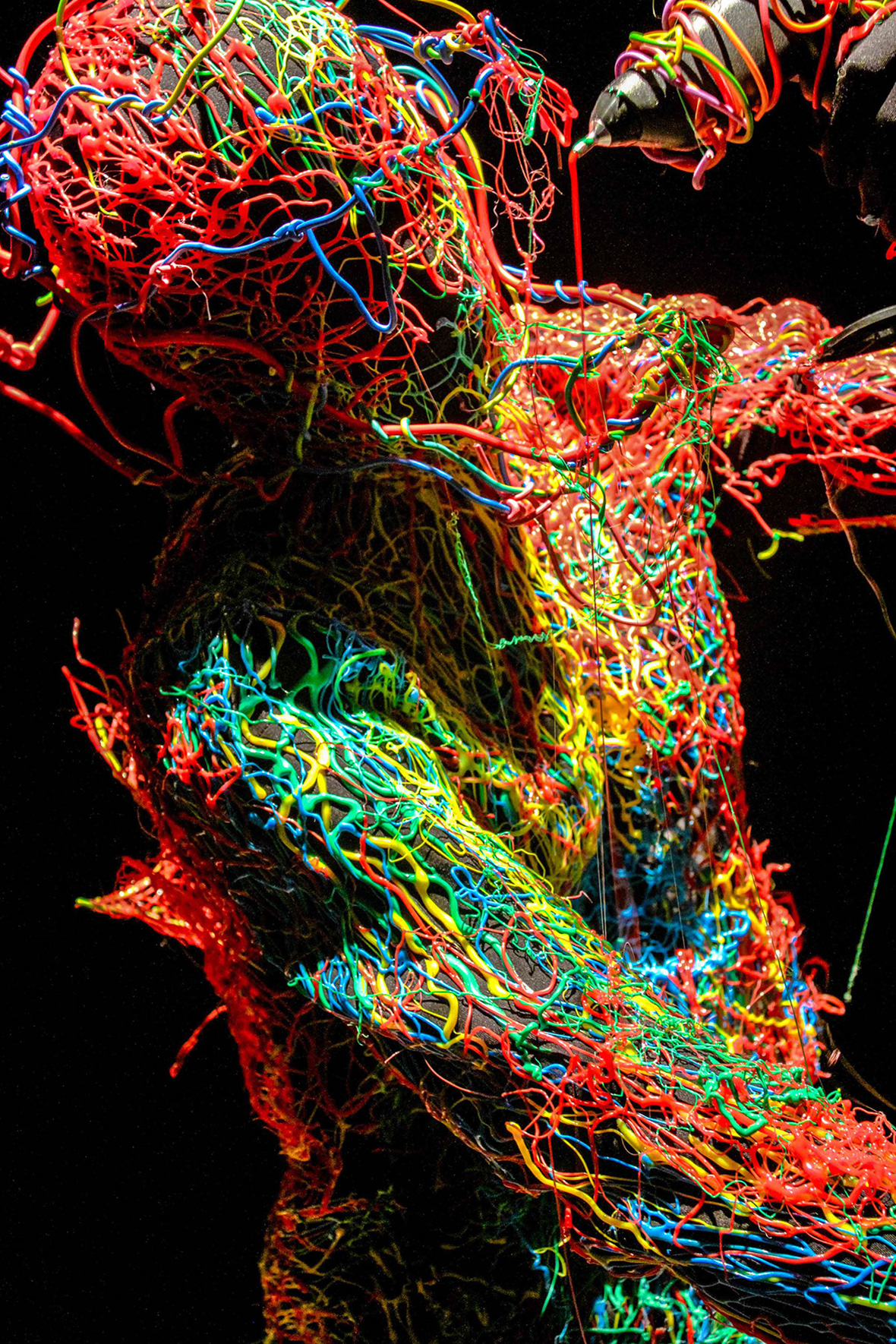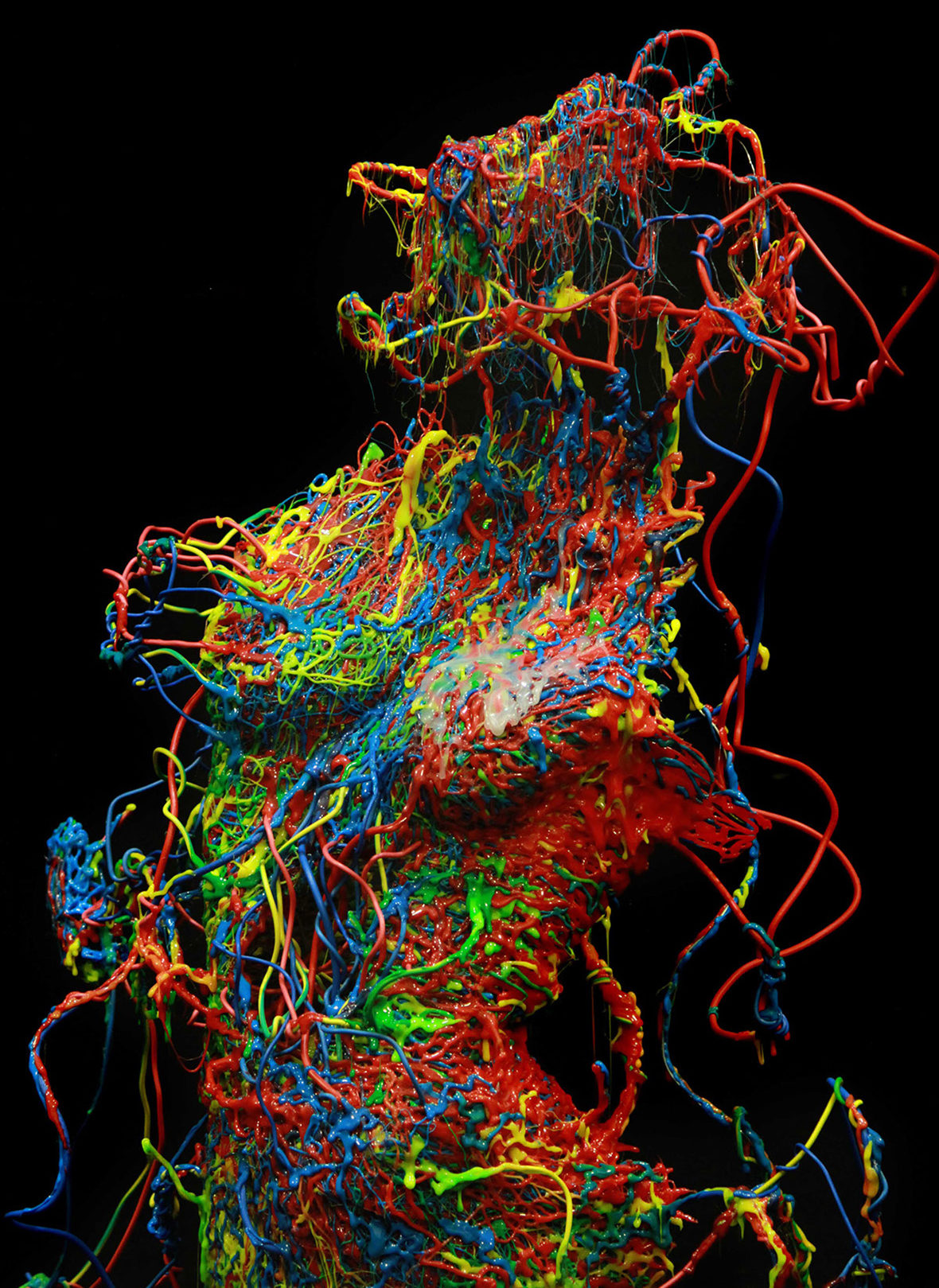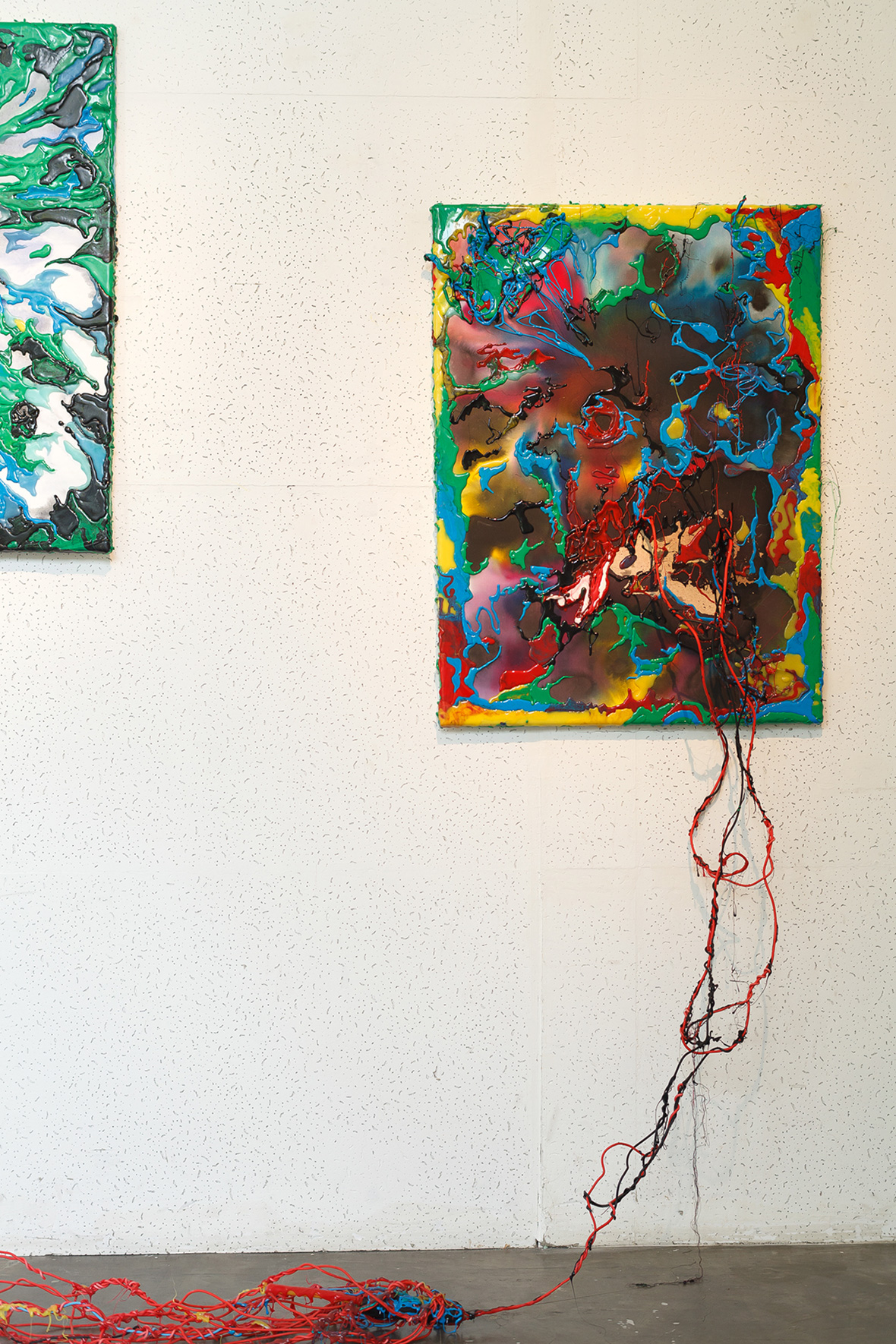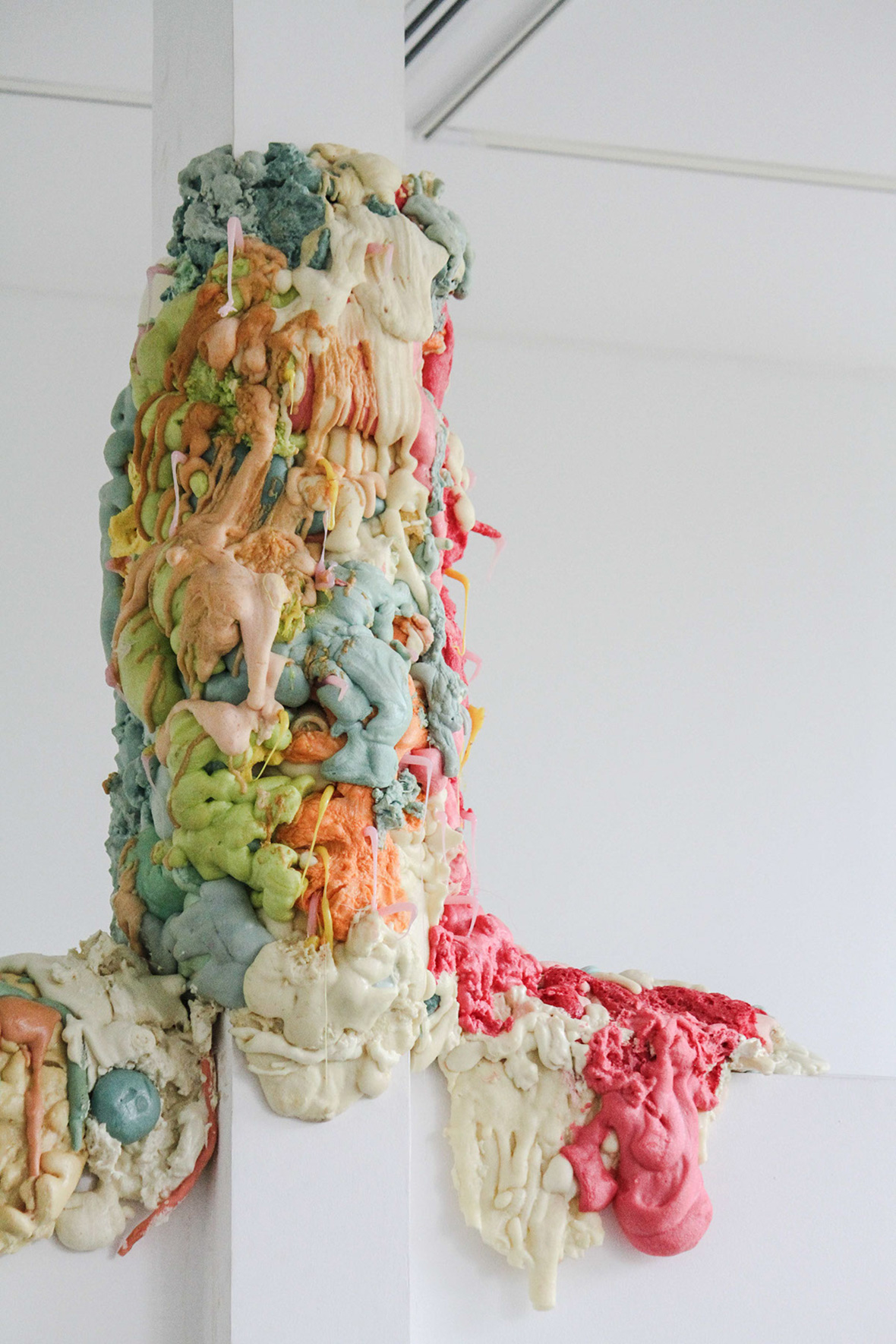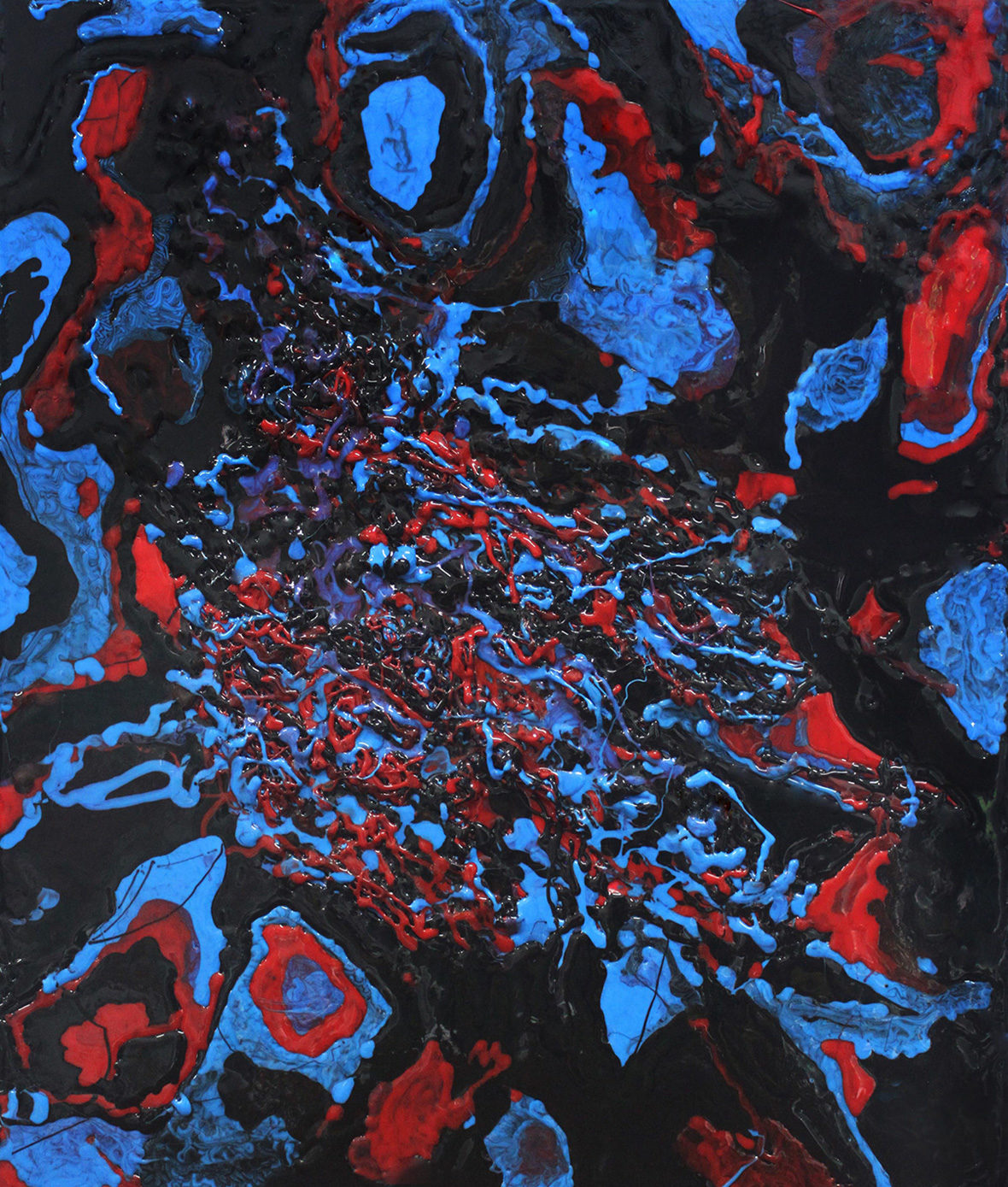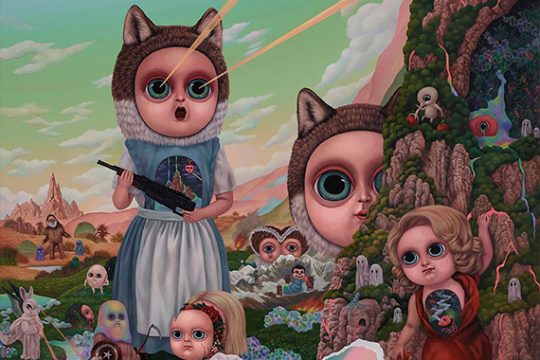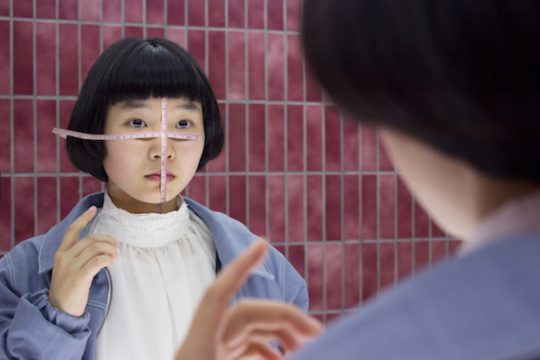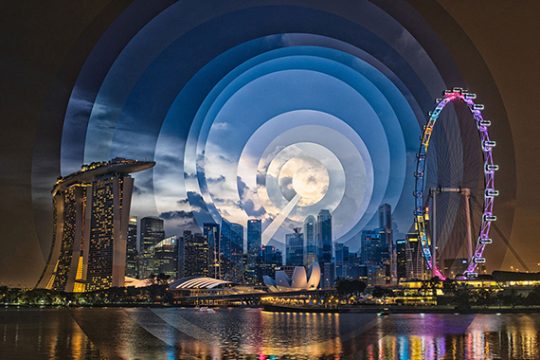
Humans are multidimensional creatures. Our identities, roles, and emotional states are never static. A myriad of factors influence which facet of ourselves we decide to show to the world at any given time. The different sides of our individuality are a topic of interest for Thai artist Rook Floro. Through sculptures, installation art, and performance art, he’s brought four of his alter egos to life in unnerving fashion—an ominous shadow, a crow-beaked wraith, a rainbow-colored shapeshifter, and a man melting into goops of red and blue. “These are manifestations of my individuality, and when something is based in my life, it usually comes out unsettling,” he laughs. “It wasn’t on purpose, more like a subconscious thing.”
人类是多维度物种。我们的身份、角色和情绪状态往往不会一成不变。不同时刻,会有各种各样的因素影响着我们将以何种面目公示于众。对于泰国艺术家 Rook Floro 而言,人类个性的不同剖面始终是他创作中乐此不疲的主题。通过一系列雕塑、装置和行为艺术,他以令人惴惴不安的外在表达方式,演绎出四种不同的人格——阴郁的流影、沉默的鸦头孤魂、糜彩的变形者,以及一个正在融化成红蓝色粘液的男人。“这些分别体现了我个性的不同侧面,这种以自我生活为原型的作品,通常都比较令人不安,”他笑着说道,“但这不是刻意而为的,所创作的一切都由我潜意识操控。”
The first of his alter egos to come into existence was Flux, a manifestation of his pride and subconscious desire for perfection. The character, a dense mass of swarming darkness, was introduced through a triptych of sculptures and performances.
In Shadow, Floro combines performance art with sculptural art in a compelling work that meditates on Carl Jung’s theory about a person’s id—repressed ideas and hidden desires that the conscious mind isn’t always aware of, which in Floro’s case is the pressure from family, society, and the media. A performer, dressed in a black bodysuit, sits in the gallery space, and Flux stands before him, a menacing shadow figure. There is a sense of hierarchy, with the seated man appearing clearly subservient to Flux.
In Shell, Flux kneels in despair, appearing to melt into the floor. Gaping cuts running down his spine and legs reveal the figure to be a hollow cocoon. With this piece, Floro comments on the ease with which we can lose a piece of ourselves whenever we try to become something we’re not. Those too far gone may end up a shell of their former selves.
第一个自我取名为“Flux”,象征着他的骄傲与潜意识中的完美主义。这个自我由一团密集的黑影构成,通过三组不同的雕塑和形态展示而出。
在《Shadow》中,Rook 结合行为与雕塑艺术,探讨了心理学家卡尔·荣格(Carl Jung)关于人之本我(ID)的理论,即现实中,人们从未意识过的那些被压抑的想法和潜藏的欲望。对于他来说,这种压力的来源主要是家庭、社会和媒体。身着黑色紧身衣的表演者坐在画廊里,而 Flux 就站在他面前,压迫感十足,好像坐着的人必须要服从 Flux 才行。
而在作品《Shell》中,Flux 则绝望地下跪,身体正不断嵌入地板。沿着他的脊椎和腿上裂开的伤口暴露出他空洞的本质。对于这件作品,Rook 解释说,当我们试图成为自己所不是的人时,就会失去一部分的自我,此时相对于 “旧我”,就只剩下一躯空壳。
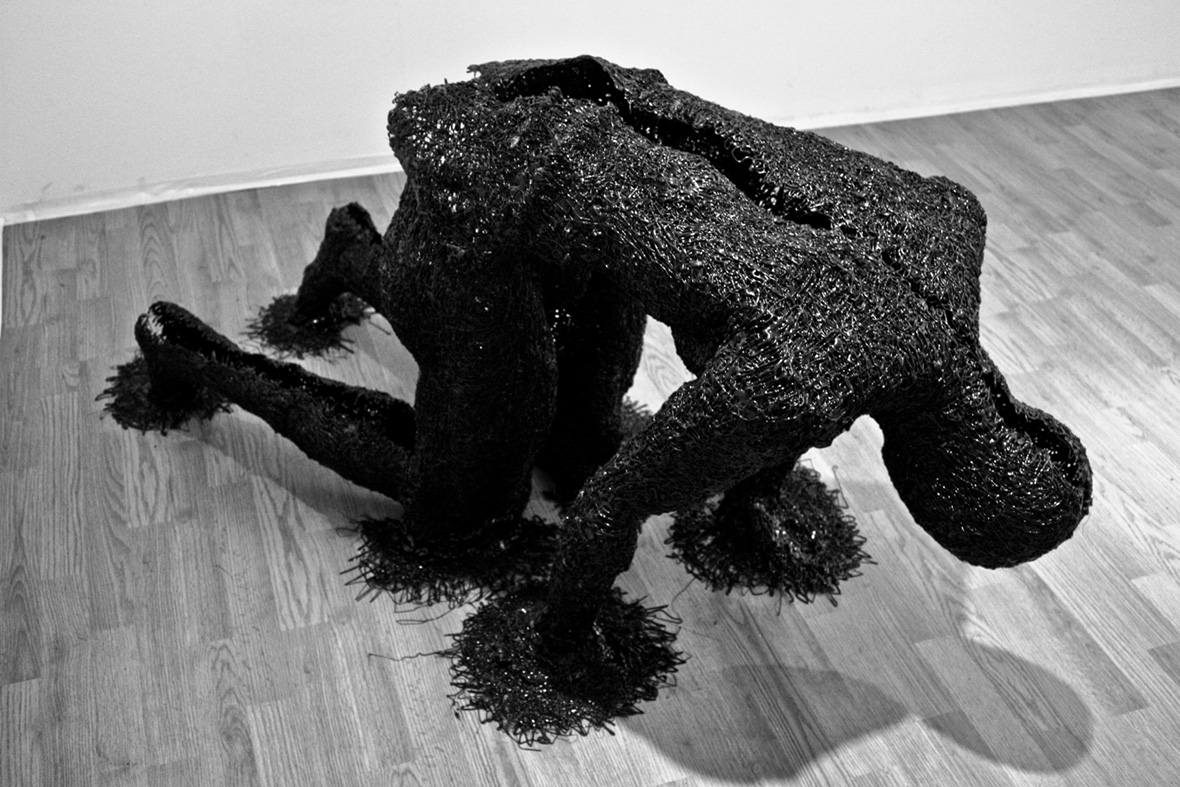
For Shift, the finale of the series, Flux ascends into its final form. Dressed in a tailored suit, he sits on an obsidian throne and looks down at the lesser beings beneath him, but he realizes that he longs for who he was in the past, despite the feelings of inferiority that haunted him. He descends from the throne, removes the suit, and returns to his original self. The desire for perfection doesn’t subside forever though, and the cycle will inevitably begin again. The three-part series speaks to Floro’s endless struggle, a constant tug-of-war between staying true to himself and achieving success.
“Flux”系列的最后部分《Shift》,Flux 升华成最终的形态。他穿上高级西装,坐在黑曜石王位上,俯视身下的低等生物,偶然间意识过去的自己,自卑感又萦绕在心头。他从王位上走下,脱下西装,回归原本的自我。然而,这种对完美的渴望不会就此消退,一切将不可避免地周而复始。整个作品由三部分组成,讲述了 Rook 自己无休止的挣扎,是一场在忠于自我和追求成功之间持续往复的拉锯战。
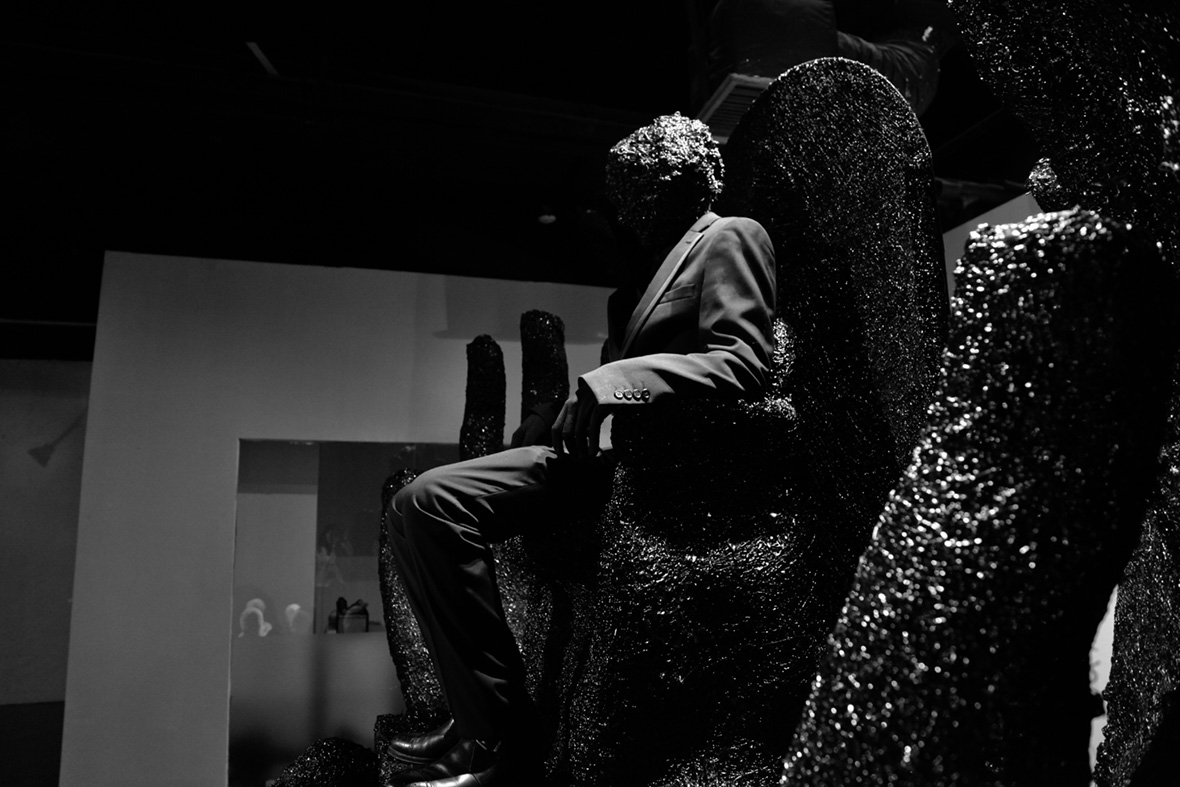
The second character Floro introduced was Corvus, a crow that symbolizes the artist’s consuming anxieties. Corvus was originally conceived via a set of illustrations that depicted it as an imaginary friend who showed up whenever his anxieties flared up as a kid. But as he got older and his anxieties worsened, he realized he was actually transforming into Corvus.
Rook 的第二个系列起名为“Corvus”,是一只象征他内心严重焦虑的乌鸦。Corvus 最初为一组插图,在这些插图中,每当小时候的 Rook 爆发焦虑时,Corvus 就会作为假想中的朋友出现。然而,他长大后,这种焦虑日益加剧,他意识到,自己实际上正变成 Corvus。
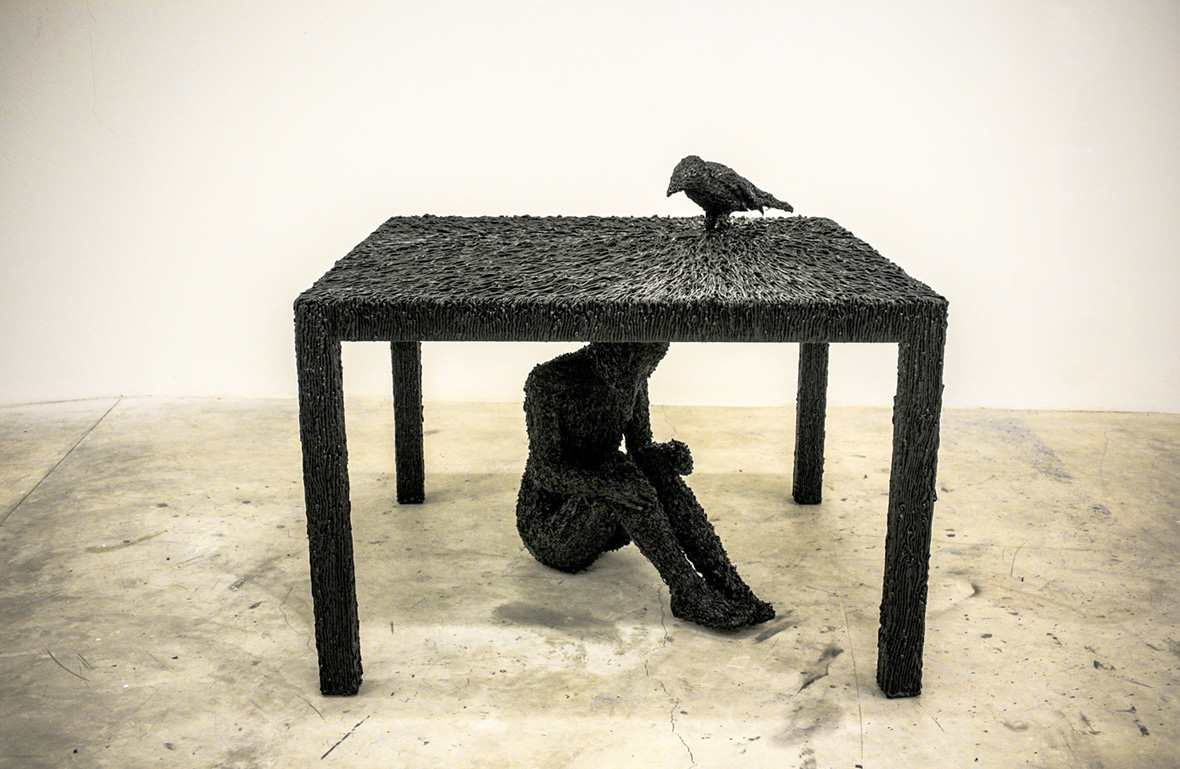
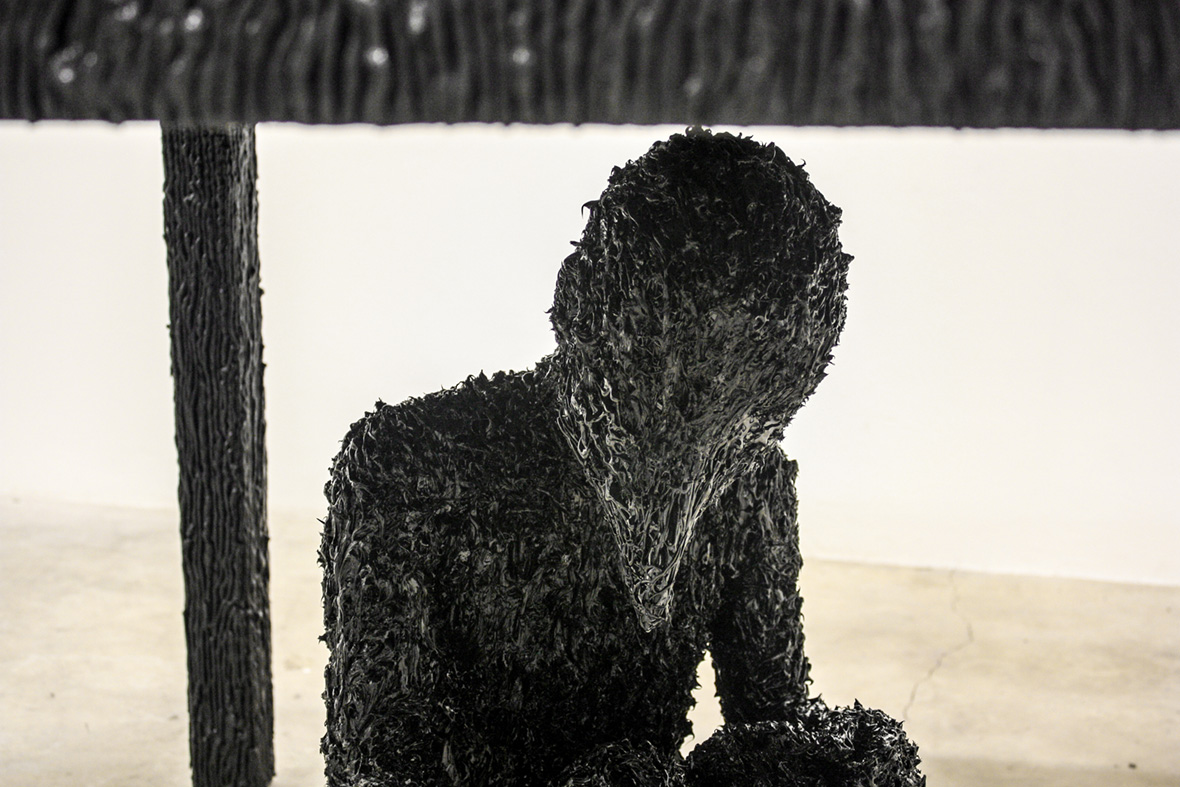
Flight and Attack are perhaps some of Floro’s most grotesque sculptures to date. The former captures the artist’s vulnerability and despondency in full. The beak-faced Corvus hides beneath a table, seemingly terrified of the world. Above him, a raven is perched on the tabletop, indifferent to his distress. In the latter, Corvus’s anxieties have reached a breaking point. With hands clasped around his own neck, Corvus is on his knees, expelling an explosive stream of vomit from his open beak. On his head, the crow that was originally on the tabletop has its talons and beak dug deep into his scalp. This piece examines the aggressive tendencies Floro realized he turned to whenever bouts of anxieties became too much, which resulted in him lashing out at friends and family. These works are his apology to those who’s he’s hurt as Corvus. “Art is the only tool that allows me to truly understand myself and resolve all my issues by expressing it outwards,” he says. “Creating art is my own personal therapy and getting to know yourself is the best way to get rid of your demons.”
《Flight》(飞行)和《Attack》(攻击)也许是 Rook 迄今为止最怪诞的雕塑作品之一。《Flight》呈现了 Rook 的脆弱和沮丧。面带鸟嘴的 Corvus 躲在桌下,对世界饱含恐惧。在他的上方,一只乌鸦栖息在桌面上,对他的痛苦漠不关心。在《Attack》中,Corvus 的焦虑已濒临崩溃的地步,他双手环颈,跪在地上,鸟嘴里涌出一股呕吐物。原本栖息在桌面上的乌鸦来到他头上,把爪子和鸟嘴深深地插入他的头皮。Rook 意识到,每当焦虑变得失控时,他就会变得具有攻击性,而朋友和家人则成为他攻击的对象。他希望藉着这些作品,向那些他在变成 Corvus 后曾伤害过的人道歉。他表示:“艺术是唯一能让我真正了解自己的工具,我可以通过表达来解决问题。创作艺术是我自己的一种治疗,了解自己是摆脱心魔的最好办法。”
Blastard, his third and most beloved character, is the embodiment of Floro’s extroversion, lust, and happiness. It’s a character that draws heavily on the philosophy of libertinism, an extreme form of hedonism that puts pleasures above all else. This is the most colorful of his characters, appearing as writhing strands of reds, blues, greens, and yellows. In Liberte de Blastard, Floro performs as the manic shapeshifter, adding to his colorful strands by dripping colored epoxy on himself with hot-glue guns. Globs of half-melted glue drip from his body as he moves in drunken ecstasy. “He’s the alter ego I would like to be most of the time, but he comes and goes very quickly,” he says. “I always change back to my introverted self, Corvus, who is in control most of the time.”
他的第三个系列是“Blastard”,也是最受观众欢迎的角色,是 Rook 外向、欲望和幸福的化身。这个角色大量借鉴了自由主义哲学,是将快乐置于一切之上的极端享乐主义。这是他塑造的最丰富的角色,由红色、蓝色、绿色和黄色的扭曲线条组成。在《Liberte de Blastard》中,Rook 扮演着狂躁的变形人,用热胶枪将彩色胶水滴在自己身上,增加更多彩的线条。他迈着醉酒般的步态,半融化的胶水在他的身体上滴落。“大部分时间,这是我想要成为的自我,但它来得快,也去得快。我总会变回 Corvus,那个内向的自我,它才是大部分时间的掌控者。”
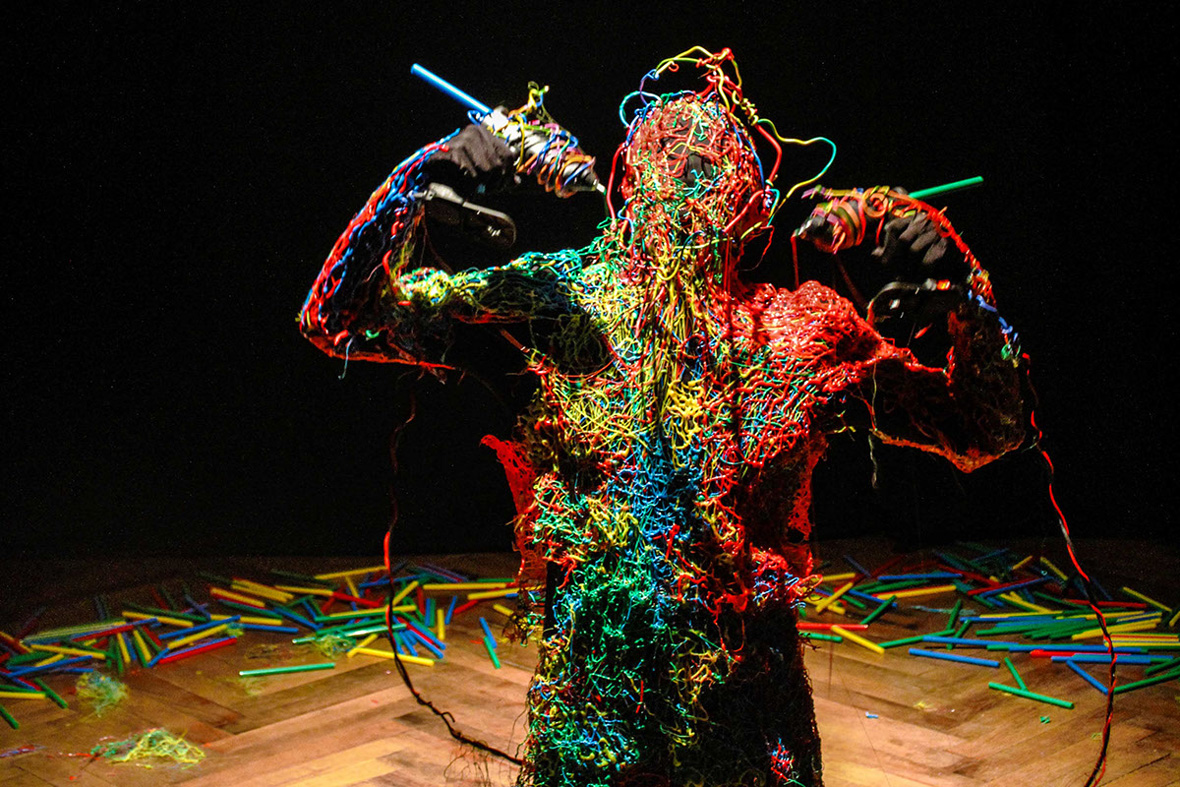
In Justine, a piece inspired by French author Marquis de Sade’s eponymous novel, Floro explores matters of sex and lust. Through an assemblage of colored wires, hot glue, and adhesives, he sculpts a woman’s torso in the likeness of Blastard himself. Devoid of limbs and any recognizable facial features, the sculpture feels incomplete, almost as if it’s a fantasy woman that Blastard has hazily conjured up in his mind.
《Justine》是 Rook 以法国作家 Marquis de Sade 的同名小说为灵感创作的作品,探讨了性和欲望的问题。他用彩色电线、热熔胶和粘合剂,按着 Blastard 的形象,制作了一位女性上半身。这个不完整的雕塑没有四肢,更没有任何可辨认的面部特征,仿佛是 Blastard 于脑海中幻想的某个女人。
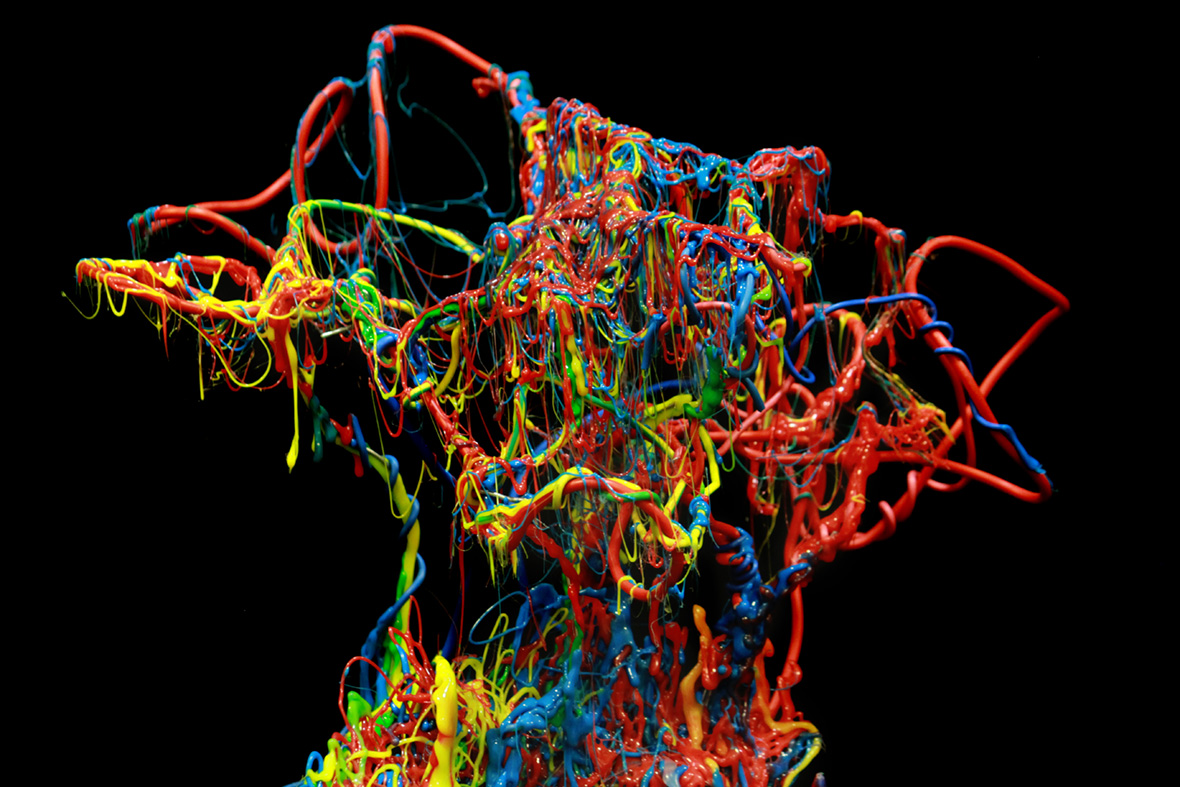
The Blastard character even extends beyond performances and sculptures. In the exhibition A Creature Apart, Floro examines the overlap between Blastard and Corvus, which saw the debut of abstract paintings and polyurethane installations that protrude and melt in uncanny ways. The foam installations seem tumorous in nature, taking over random pillars in the gallery and even swallowing up one of the paintings. “I was trying to emulate the scene in Akira where the protagonist lost control of his power and explodes into a gigantic pile of flesh,” he explains. “That scene always reminds me of self-change that happens uncontrollably, which is something I can relate to.”
Blastard 这个角色还被运用到了表演和雕塑作品之外。在“A Creature Apart”展览中,Rook 审视了 Blastard 和 Corvus 两个角色之间的重叠之处,从而创作第一批的抽象绘画,并以近乎奇特的方式(伸展和融化的聚氨酯泡沫)完成了装置艺术。这个泡沫装置艺术如同肿瘤一般,侵占画廊中的柱子,甚至将其中的艺术品吞没。他解释道:“我想模仿《阿基拉》(Akira)中主角力量失控,导致整个人爆炸的场景。那个场景总是让我想起无法控制的自我转变,这是我很有共鸣的事情。”
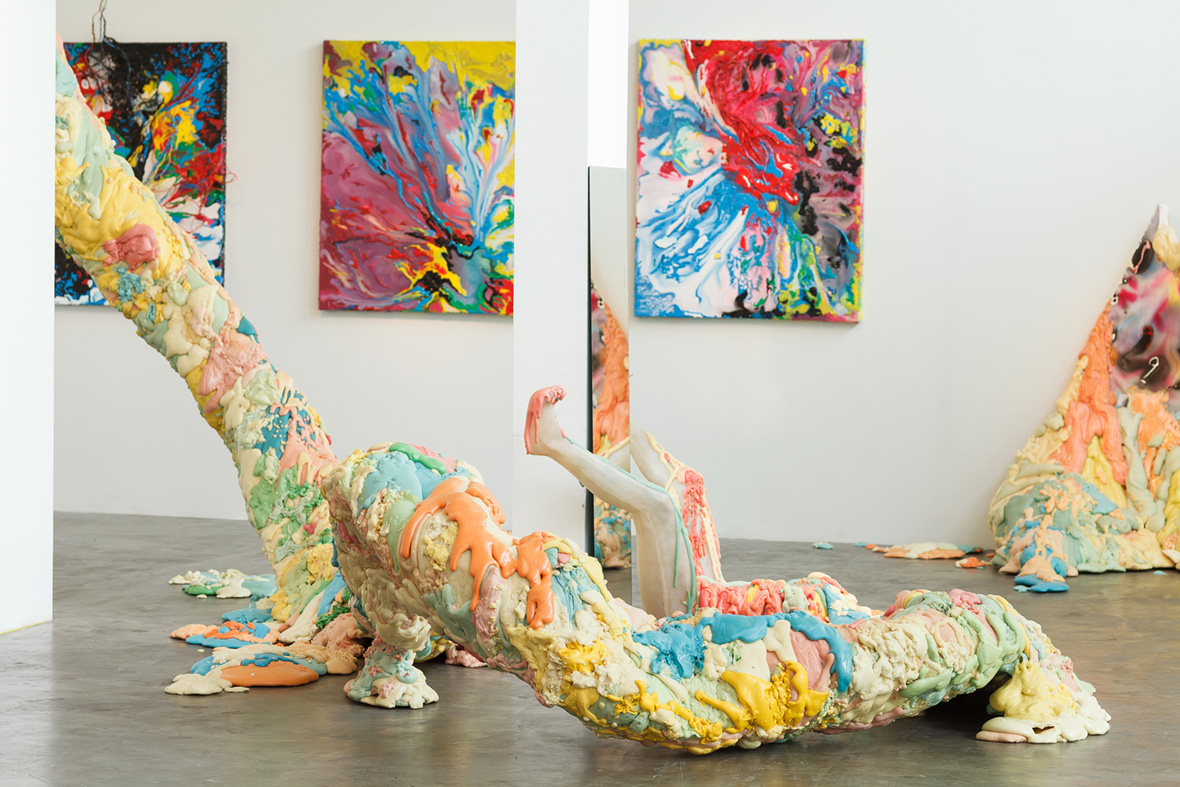
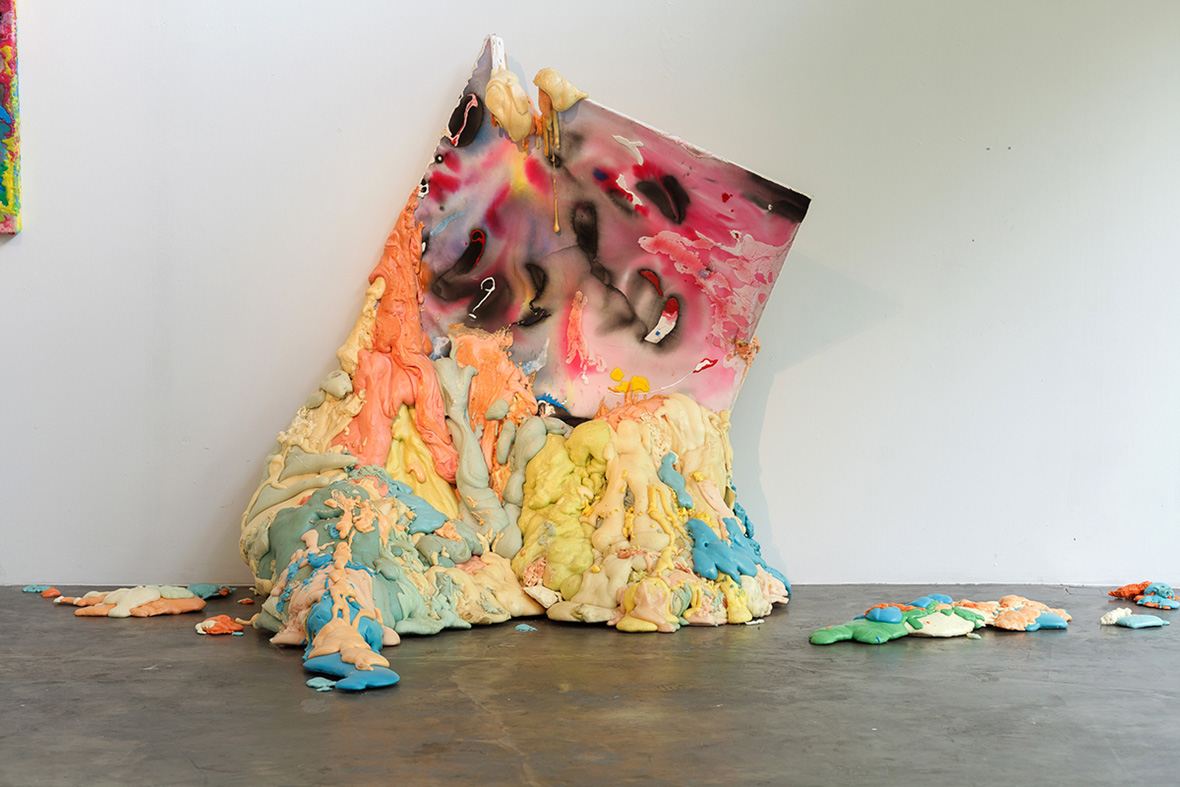
Floro’s latest persona, Alpha/Omega, is a human form that’s melting into red-and-blue globs. A puddle of swirling liquid seems to have pooled beneath the half-liquefied figure. In the exhibition, The One Between Fire and Water, canvases that seem to have been painted with Alpha/Omega’s liquid remains accompany the grotesque sculpture. Floro describes the project as his most intimate artwork to date, one that examines the core of who he is as an individual.
Rook 的最新角色 “Alpha/Omega” 是一个正在融化成红蓝色液态的人形。半液化的身影之下,形成了一滩漩涡般的液体。在《The One Between Fire and Water(水火之间)》展览中,除了怪诞的雕塑作品之外,现场的绘画作品仿佛都由 Alpha/Omega 融化的液体绘制完成。Rook 表示,这个项目是他迄今为止最私密的艺术作品,深入探讨了他个人的内心。

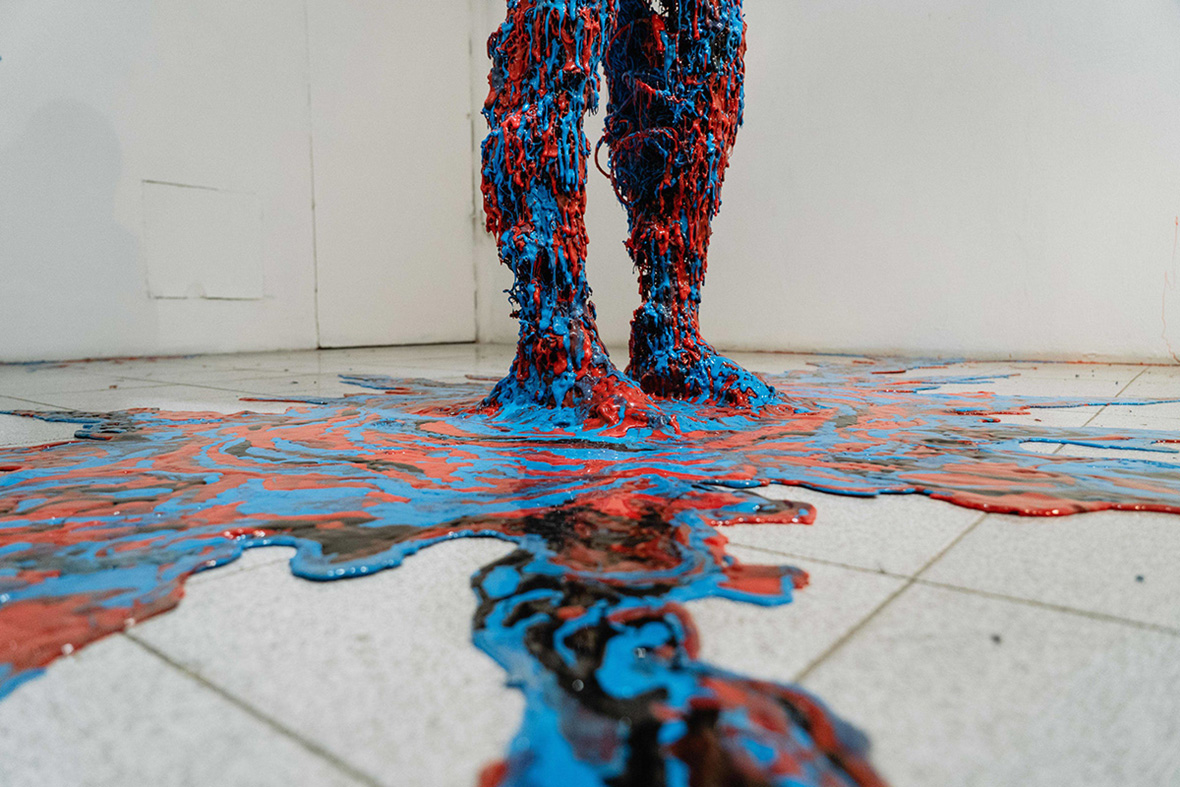
Growing up with a Filipino father and a Thai mother, Floro often felt caught between two cultures. Even though he spent most of his life in Thailand, Filipino culture remains an intrinsic part of his identity. With this character, he takes a step closer to better understanding himself and embracing this duality. “When I decided to involve my parents in the project, I learned a lot about more about my dual identities,” he says. “It’s only the beginning though, I’ll dig deeper with Alpha/Omega and find more answers as I haven’t quite found equilibrium yet. It’s something that I’ll spend my life doing.”
Rook 的父亲是菲律宾人,母亲是泰国人,在成长过程中,他总是感觉困在两种文化之间。尽管大部分时间都是在泰国生活,但菲律宾文化仍然是他身份中不可或缺的一部分。他通过自己创作的角色,更好地了解自己并拥抱这种二元身份。这或许解释了为什么角色 Alpha/Omega 由两种颜色构成。他表示:“创作过程中也邀请了我的父母参加,那段时期我对我自己的二元身份有了更多的了解。不过这只是一个开始。我会通过 Alpha/Omega 更深入地去探索,为更多我未能和解的问题寻找答案,这将是我穷尽一生去做的事。”
Like our stories? Follow us on Facebook and Instagram.
Website: www.rookfloro.com
Behance: ~/rookfloro
Contributor: David Yen
Chinese Translation: Olivia Li

